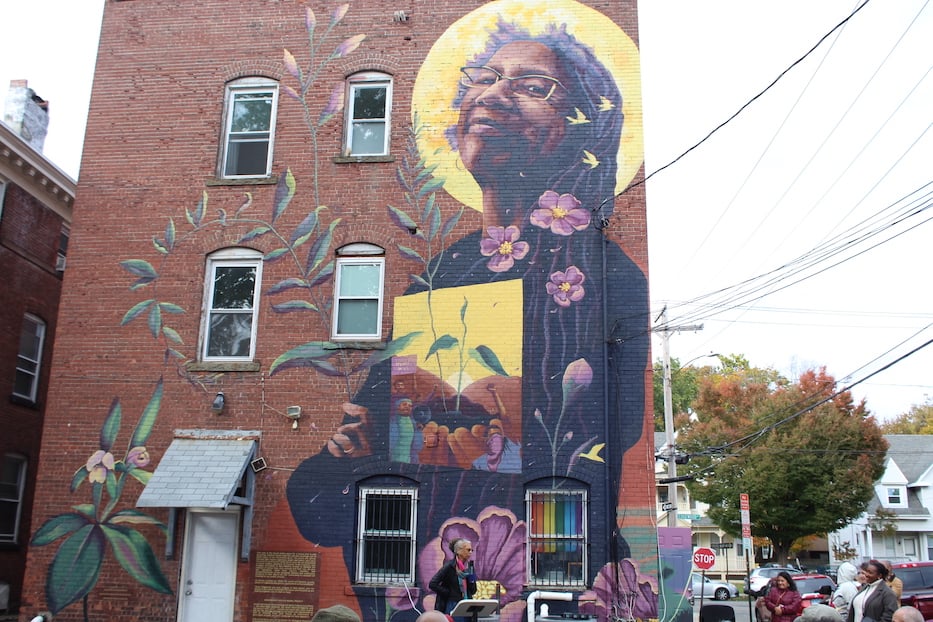
Danielle Campbell Photos.
On Hotchkiss Street, a haloed, larger-than-life Ruthie Wilson Gilmore turned her face toward the sun, flowers bursting into bloom along her neck and shoulders. In her hands, a fern tilted gently in the direction of the light. Beneath it, orchids continued to sprout, bright as they spread their petals in every direction.
Closer to the sidewalk, a real-life Ruthie Wilson Gilmore stepped forward to speak. As smiles abounded, cups of sparkling cider began to make the rounds. It was time for a toast—to art, and also to freedom, and to futures.
That was the scene on a recent Sunday, as close to 50 creatives, abolitionists, educators, students and artists gathered at Possible Futures to celebrate the mural of abolitionist and scholar Ruthie Wilson Gilmore, which went up this summer outside the beloved community bookspace. The work of artist Jess X Snow and a dedicated team of creatives and community volunteers, the finished work both honors Gilmore’s past and present, and makes the future she envisions feel entirely possible.
“The work of abolition is already happening everywhere all the time,” Gilmore said. “And in most places where people are doing this work, they do not call it abolition. Nor need they. The point is not the name. The point is the purpose and if the purpose is to make the abundance of life possible, so that everywhere where life is precious, life is precious. They are doing abolition in projects, great and small.”
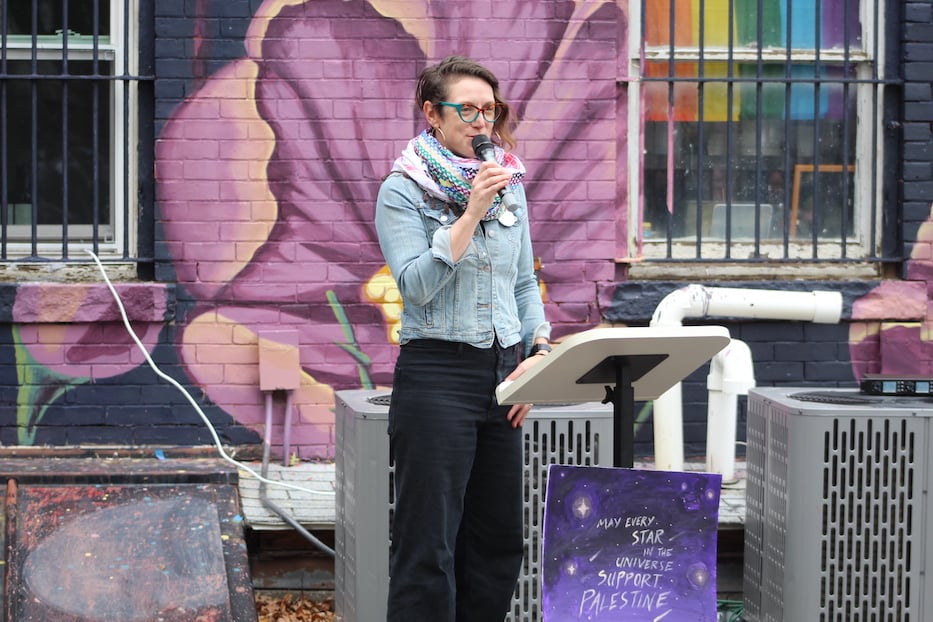
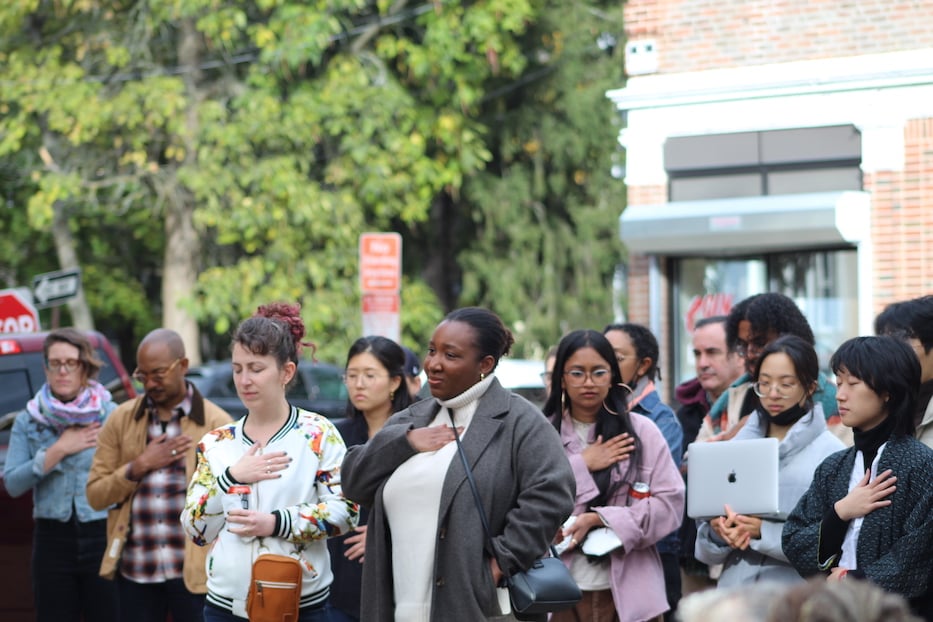
Top: Bookspace founder Lauren Anderson. Bottom: Attendees during a grounding.
The mural has been months, if not longer, in the making. Inspired by her former students’ mapping of Black, Latinx, and Indigenous history at Metropolitan Business Academy, educator Nataliya Braginsky spearheaded the project earlier this year, after connecting with Snow and with Daniel HoSang, a former student of Gilmore’s who is also a member of the Anti-Racist Teaching & Learning Collective (ARTLC). Braginsky has worked with HoSang, who put her in touch with Gilmore, for several years.
In the spring, Braginsky also ran an Intergenerational Abolitionist Project book club and working group out of Possible Futures with then-James Hillhouse High School senior Elsa Holahan. Holahan is now a freshman at Yale.
Sunday, Holahan spoke about the uncomfortable connection between public schools in America (including the New Haven Public Schools) and the prison industrial complex, a tie that has propelled her own activism for years. As a member of Students for Educational Justice, she helped lead "Students Over SROs" a statewide campaign to get police (SROs, or school resource officers) out of schools while expanding funding for student mental and emotional health support services.
She noted how her own lived experience in the public school system helped create a context for Gilmore’s work, and a certain urgency around making it visual.
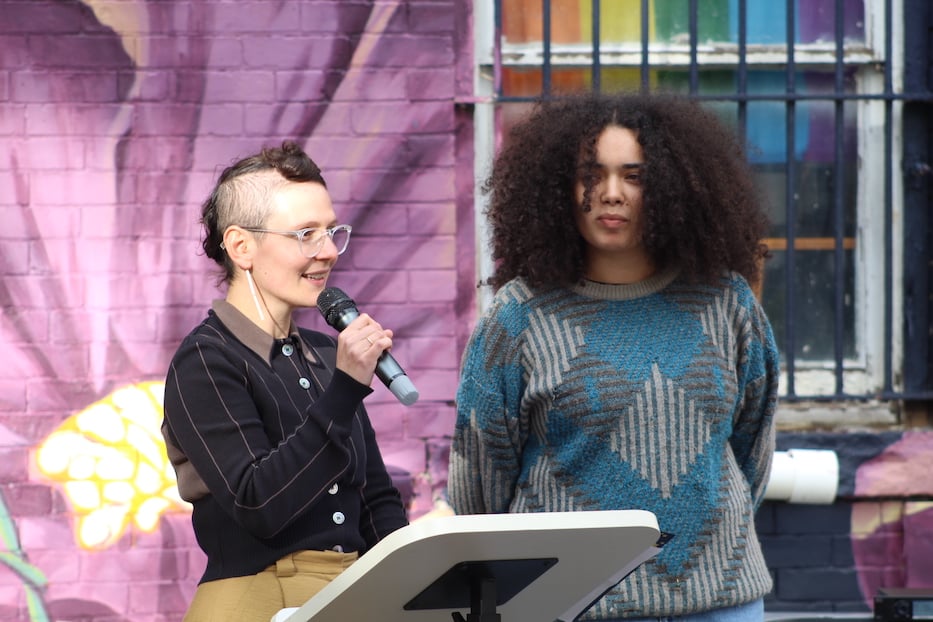
Braginsky and Holahan.
“Throughout my time in the New Haven Public School District, there are many comparisons of our schools to prisons,” she said. “To enter the building, we shuffled through metal detectors with our bags subjected to searches. Armed officers from the New Haven Police Department lined our hallways carefully surveilling me and my peers. And our movement and being was restricted within the building's four walls in various ways.”
Many of the speakers also spoke about their fears, frustrations, and personal and collective triumphs in creating the mural. Project Manager Gavriel Cutipa Zorn, who helped steer a series of community painting days in New Haven, spoke about the delays that the team could not have anticipated, including June rainstorms and a shifting timeline once the team had arrived.
Shifting the focus to Gilmore, who sat beaming in the audience, Zorn noted the importance of giving people their flowers while they are still alive. He shouted out the importance of being in community together, particularly among educators and abolitionists.
“Contrary to a world that believes that loneliness is the only way to exist, we can build hope together by committing ourselves to making a new thing again, again, and again,” Zorn said.
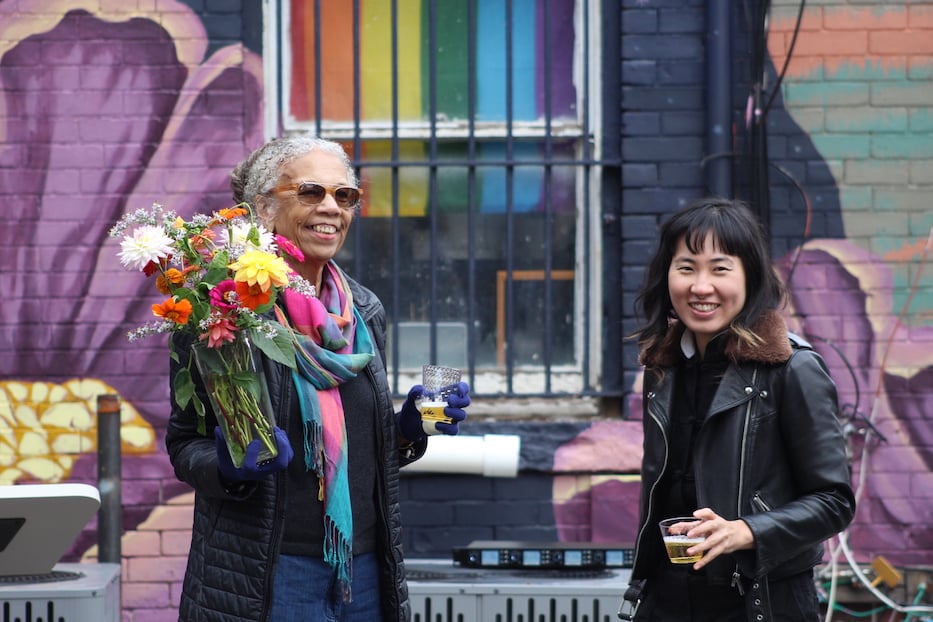
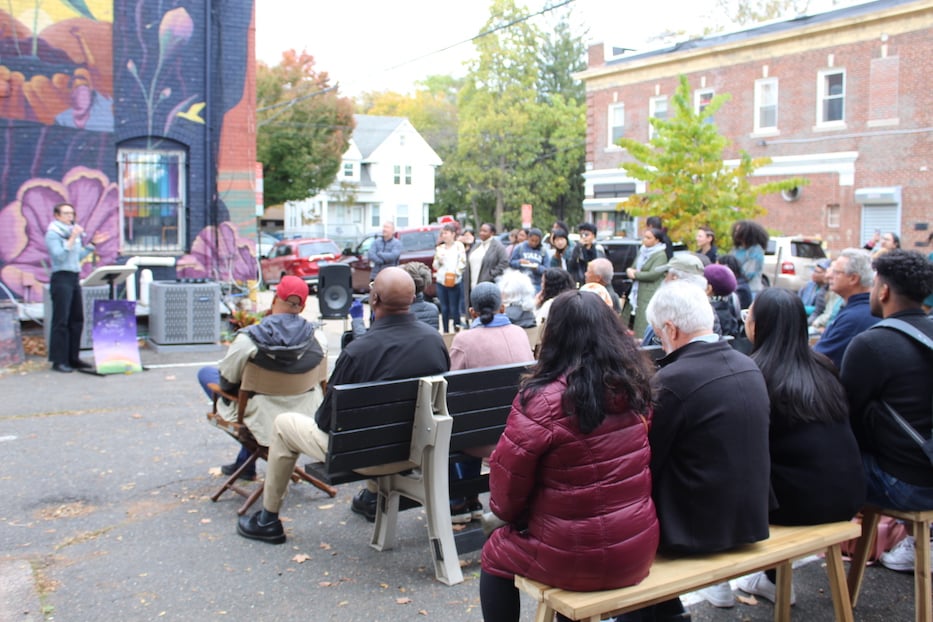
Top: Ruthie Wilson Gilmore and Jess X. Snow.
Zorn and others also directed viewers to text on the mural that defines and describes abolition, written in part for passers-by who may not know what abolition is, or may already practice it but not have the vocabulary for it. With HoSang, Yale students Sunehra Subah and Aden Gonzales created a curriculum to display across from the mural, including examples of how abolition shows up in food, housing, decarceration, education, and healthcare.
“I was returning a lot to ‘Howdid I first learn about abolition?’" Subah recalled. "How has someone who's never heard of the word abolition before … how would they approach it? Because it isn't just about dismantling but also rebuilding and imagining together and what does that look like?"
Sunday, a multigenerational group of attendees took their time with it, some reading the examples with small children in tow. As she looked over the curriculum, community member Elizabeth Nearing said she was excited to see Gilmore’s legacy get its proper due in New Haven. Earlier this year, she contributed to a GoFundMe for the mural, and later painted a few blades of grass on the mural itself.
“I want it to be working towards people getting free, and also looking for where that exists already in New Haven,” she said. “One of the things I love about New Haven is that there are so many people who are like, thinking in beautiful, creative ways about moving towards freedom.”
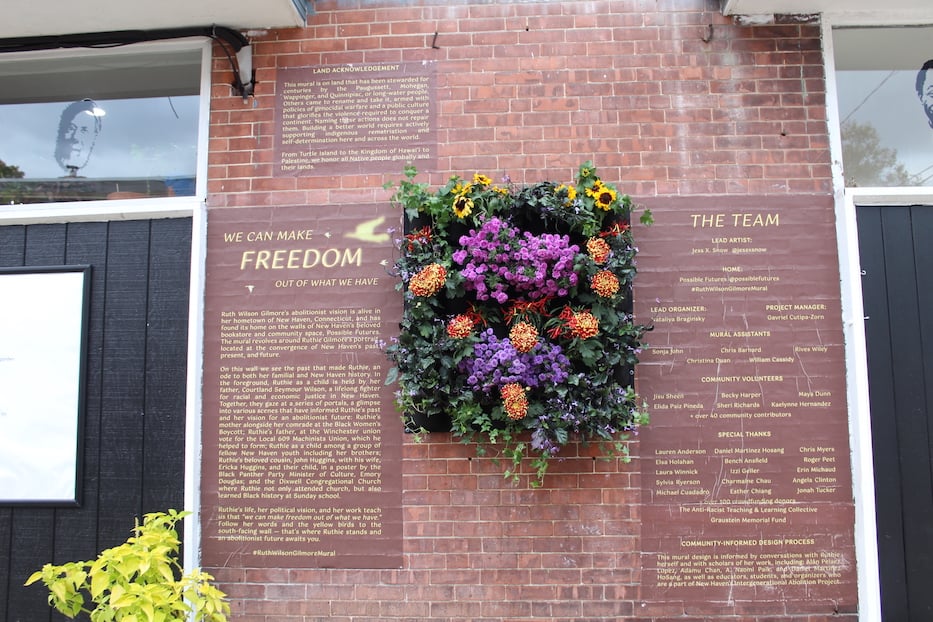
On Sunday, it seemed that many of them were inside Possible Futures, as the bookspace filled with the gentle hum of conversation, of friends catching up, of Gilmore taking time to chat with people who waited patiently in line for a chance to meet their abolitionist shero. While Gilmore described herself as shy, she made space for each attendee, smiling so big it lit up the room several times throughout the afternoon.
“She said, ‘Freedom is a place, and we make it, and we make it, and we make it,’” Nearing said before meeting Gilmore, a copy of Abolition Geography in one hand. “And that really sits with me, with how much of our practice is to move towards freedom. And to think about what they were saying about abolition as a way of being.”